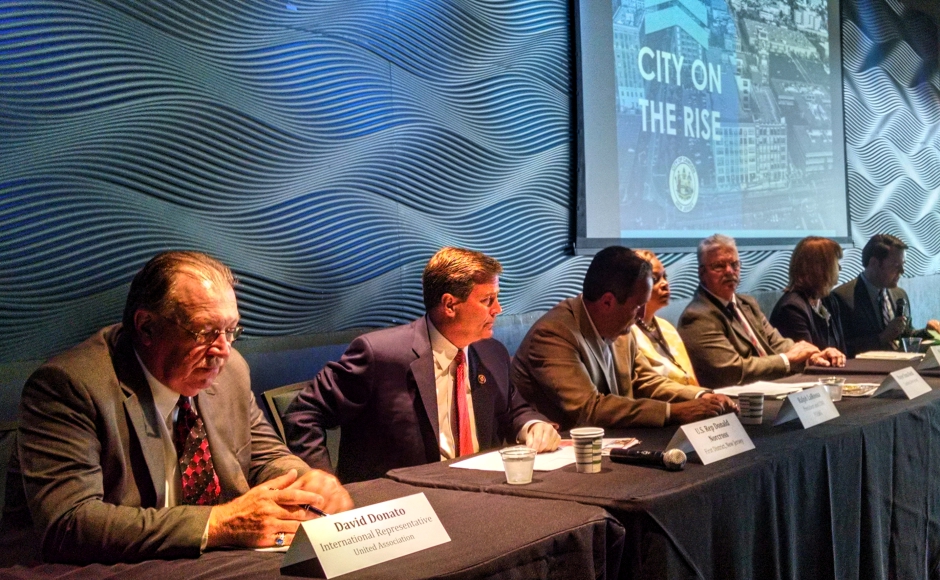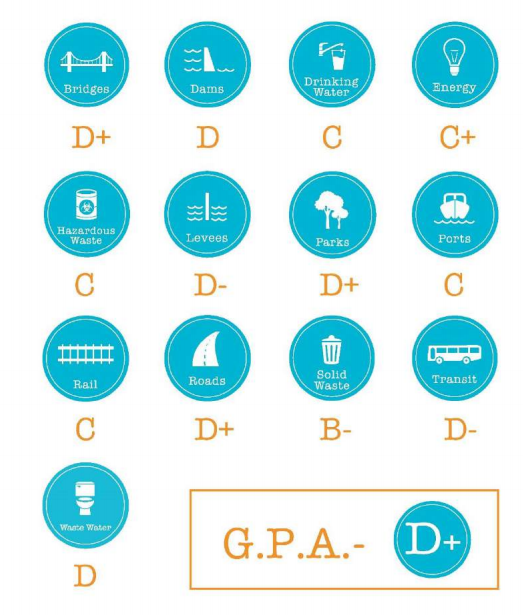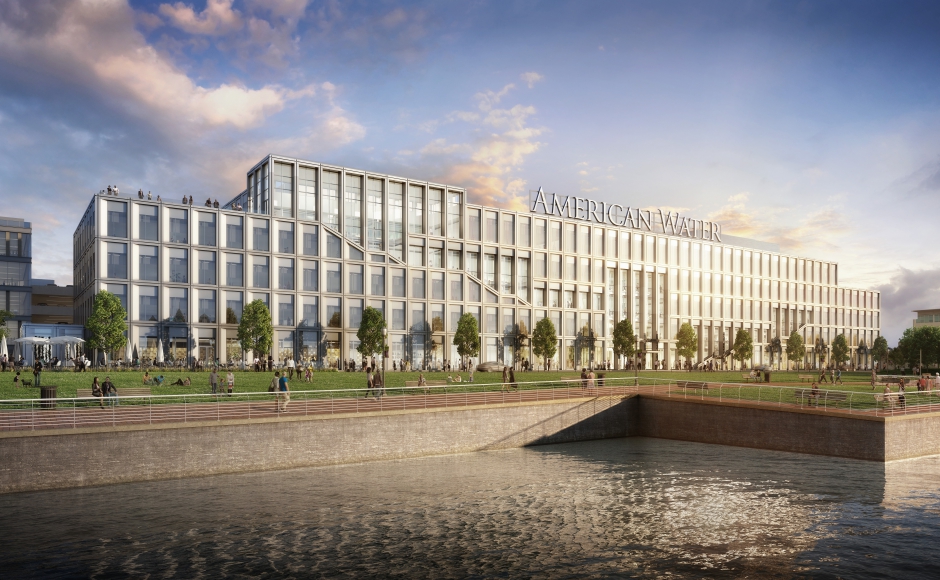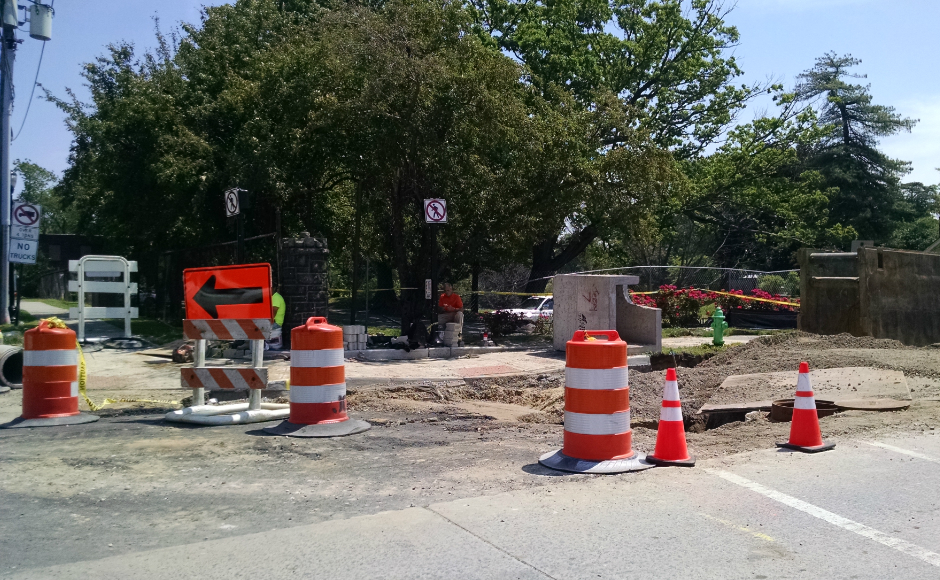Infrastructure reinvestment offers opportunity for job growth, business recruitment, and environmental improvement. So why can’t elected officials summon the political will to make bigger changes?
By Matt Skoufalos
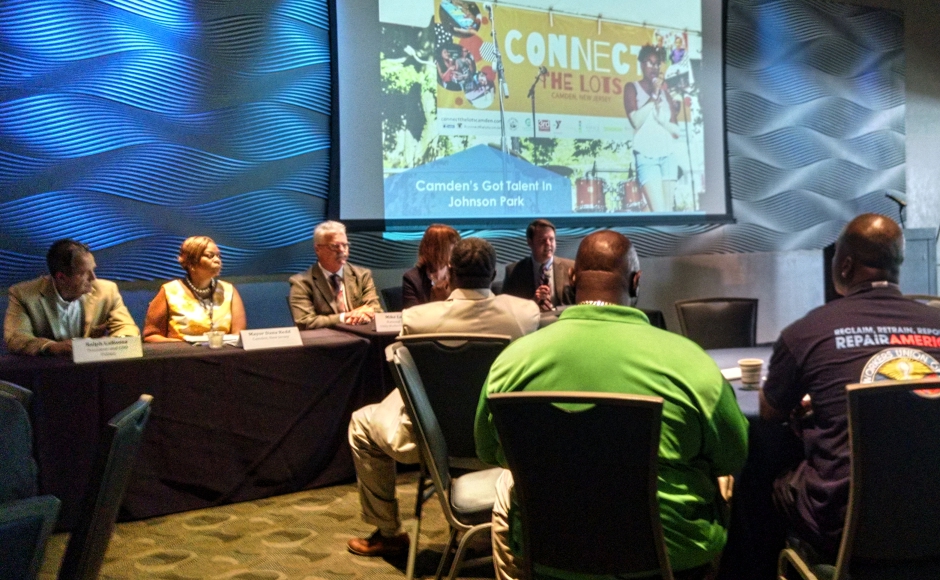
Labor and political leaders discuss the issues of infrastructure redevelopment in Camden City. Credit: Matt Skoufalos.
In the ballroom at the Camden Adventure Aquarium, a slideshow rotated through a half-dozen major capital projects that have gotten underway in the city in the past half-decade.
The Rutgers-Camden nursing and science building. The Holtec technology campus and relocated headquarters of Subaru America. The Philadelphia 76ers training facility. The billion-dollar Liberty Property Trust waterfront redevelopment. The Roosevelt Plaza pop-up park. Roadway improvements along the Haddon Ave corridor.
Before those images sat a row of political and labor leaders convened by the BlueGreen Alliance, a national coalition of trade and environmental groups, to discuss the challenges of finding dollars—and, more importantly, the political will—to invest in a state whose infrastructure was rated a D+ by the American Society of Civil Engineers for transportation and energy systems that are “mostly below standard, with many elements approaching the end of their service life.”
Camden City Mayor Dana Redd described her city as a former industrial powerhouse rich in history, but bereft of the economic base necessary to repair its aged roadways, sewer and water systems, and power grid.
“South Jersey is part of the entirety of all of New Jersey,” Redd said. “When Camden does well, all of the region does well.”
The city relies heavily upon grant dollars to get many capital projects off the ground, and upon collaborative nonprofit efforts to train the local workforce that so desperately needs the opportunity to work there, Redd said.
When those dollars must come from state and federal governments who are divided by regional and partisan interests, the wait for relief gets longer and longer.
The city has been scrutinized for its use of tax credits and economic development dollars to recruit larger corporate partners, but U.S. Congressman Donald Norcross (D-NJ) said that without those incentives, South Jersey was losing out to northern metro centers in its business development efforts.
“There was a vision over the course of the last eight years that if you want to come to the city, you have to pay your full freight, which was a great vision, but wasn’t working,” Norcross said. “Prior to the Economic Opportunity Act, 96 cents of every dollar went north of I-95. We saw what happened to Jersey City, and said, ‘We’re getting our lunch eaten by Philadelphia.’”
Those incentives were recently relied upon in the successful courtship of American Water to the new Camden waterfront redevelopment, which two weeks ago landed $164 million in EDA tax credits through the Grow NJ assistance program to fund its new, five-story headquarters.
Whether the presence of the utility will be sufficient to leverage its resources in helping separate out the city’s combined water and sewer system to limit regular flooding concerns is just one of several, high-profile infrastructure needs Camden must address to clear the way for future business growth.
PSE&G President and COO Ralph LaRossa described working infrastructure as the platform upon which the most basic activities that are needed for the economic development of cities is built. Even in demolishing existing buildings to clear the way for redevelopment, “the wires and the pipes still need to be there, whatever we’re delivering,” he said.
“Infrastructure is tied to both the beginning and the end of the process.”
Mike Langford, National President of the Utility Workers Union of America, summed it up more succinctly, asking, “Would you rebuild in an area with unstable power and water?”
“We need to figure out ways to fund this to rebuild America so industry can thrive,” he said.
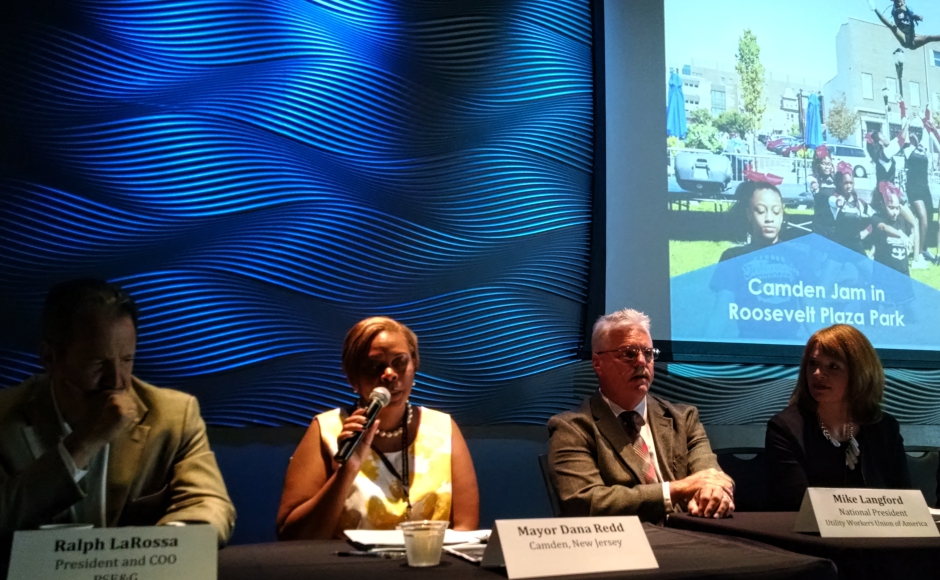
Camden City Mayor Dana Redd speaks at a panel discussion about Camden infrastructure investments. Credit: Matt Skoufalos.
Job creation, environmental advocacy, barriers to success
Wyatt Earp, International Business Representative of Parsippany, NJ-based IBEW 102, spoke about the value of workforce development as a component of infrastructure reinvestment.
Creating jobs that allow local skilled labor to work in their hometowns is another piece of the puzzle.
Job training, into which his union invests $1 billion dollars annually, gave the 2,258 IBEW members who live in Camden the opportunity to work in their hometown, Earp said. Local job creation is “as much of a priority as improving the skill of the workforce on the jobsite,” he said; “not bringing people in, but to train the people who live here.”
Despite the commoditization of energy and the lowering of associated costs (described in the DRPA Future Forces forecasting report), “nobody wants to pay for” the reconstruction projects that help deliver those services, said David Donato, International Representative at the United Association of Journeymen and Apprentices. The costs of projects and the time spent working the jobs themselves brings “a lot of difficulties,” especially when rate increases are negotiated as a trade-off for the work, Donato said.
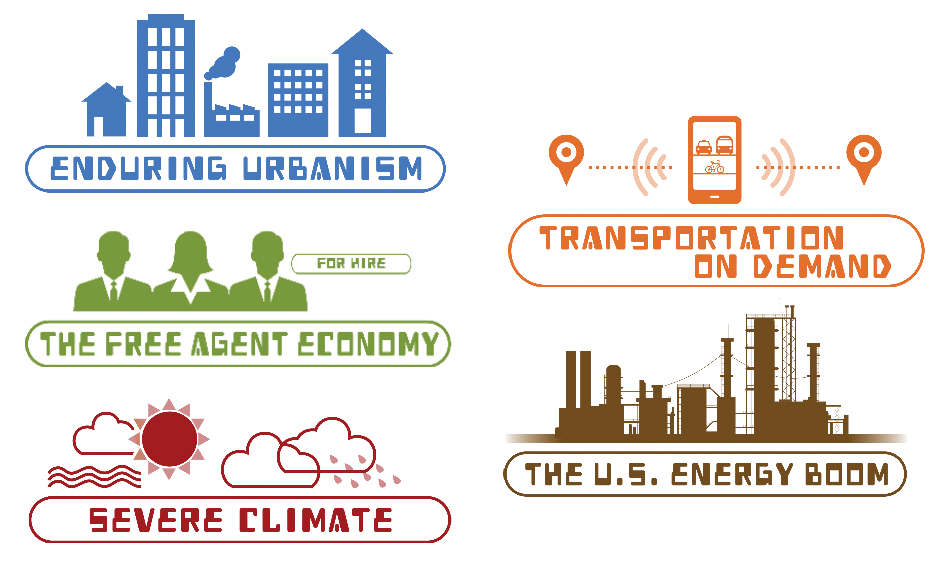
The DVRPC has identified five Future Forces as having a regional impact through 2045. Credit: DVRPC.
Utilities need the certainty of income associated with guaranteed rates before starting a project, and yet the raising of usage fees to cover the cost of infrastructure investment often becomes a political conversation, LaRossa said.
The average household pays about 2 percent of its annual income in bills for natural gas and electricity—a fraction, he said, of similar bills for Internet, cable, or phone usage—yet those burdens are more heavily felt among lower-income families, where households below 50 percent of the federal poverty level may dedicate as much as 40 percent of their earnings to utility bills.
“We want to get ahead of the curve and replace a bunch of [infrastructure],” LaRossa said. “Educating the consumer on the value of the products and long-term certainty are the barriers we have.”
In addition to providing a higher level of service and cutting waste, infrastructure re-investment saves on carbon emissions, creates jobs, and improves service delivery in the face of increasingly volatile weather conditions, said Dan Fatton, Executive Director of the NJ Work Environment Council. Unfortunately, in the statehouse, “there’s a short-term mindset that’s been stifling,” he said.
“We’re debating how to cut $800, $900 million out of the budget when we should be talking about how to invest in our Transportation Trust Fund,” Fatton said.
New Jersey faces $32.5 billion in wastewater investment in the next 20 years and another $7.9 billion for drinking water, Fatton said—and yet discussion in the assembly centers on how to cut taxes instead of how to pay for those needs.
“There’s a fundamental mismatch, and we’re having the wrong conversation,” he said.
“There needs to be a recognition that on a municipal, state, and federal level, taxes help pay for infrastructure, and there are societal benefits for these things. It’s a hard argument to make. It’s a political loser in the short-term [and] one of our issues is a short-term mentality when it comes to fiscal [needs].”
That political tension has been evident at every level of government, said Kim Glas, Executive Director of the BlueGreen Alliance. Whereas the national transportation and infrastructure bill was historically a place for bipartisan political action, its reauthoritization in recent years has seen a retreat to Democratic and Republican corners.
“Even for Flint, Michigan, which was in the news nonstop for months, the people are still waiting for an infrastructure package,” Glas said. “Plumbers and pipefitters have given their weekends and days off going door-to-door to help people replace water filters. That shouldn’t have to happen that way.”
“That’s Washington,” Norcross said, indicating the floor-to-ceiling tank in the aquarium ballroom, “sharks swimming around, trying to kill each other.
“Actually,” he said, reconsidering, “they behave better than Congress.”


